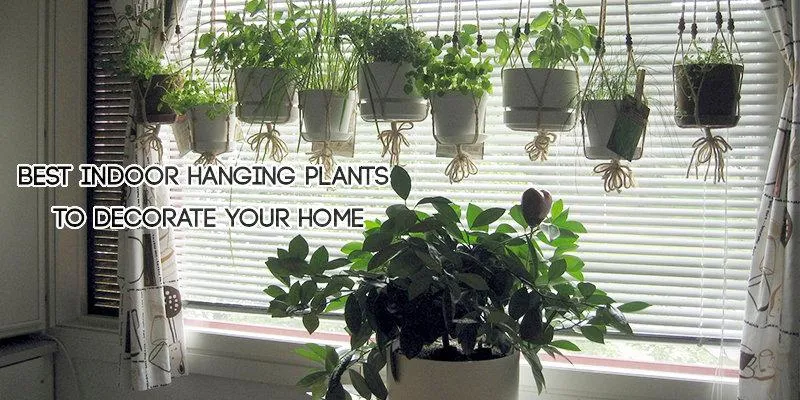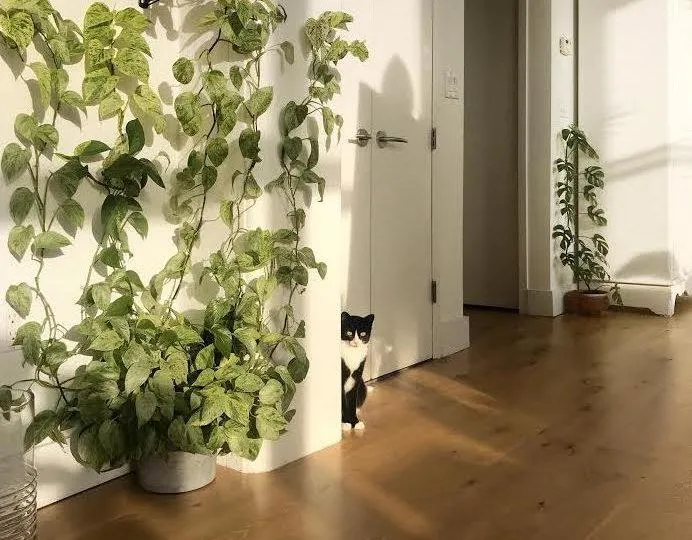The Ultimate Guide to Hanging Indoor Plants
Wondering which plants are best for hanging indoors? You’ve come to the right place. In this article, I’ll cover all the top options for hanging plants and provide answers to all your questions about caring for them. By the end, you’ll know exactly which hanging indoor plants are sure to thrive in your home.
Top Hanging Plant Picks
- Pothos – Also known as devil’s ivy, pothos is one of the hardiest and lowest maintenance hanging indoor plants. Its trailing vines grow quickly and can cascade several feet. Pothos thrives in low to medium light.
- English ivy – Like pothos, English ivy is super hardy and forgiving. It does well in low light and can tolerate some direct sun. English ivy grows rapidly to fill out hanging baskets.
- Spider plant – With long graceful spider-like shoots, spider plants add delicate texture when hung. They produce small white flowers and baby plantlets on long stems. Spider plants prefer medium to bright indirect light.
Those are my top three recommendations, but there are many other great hanging plant options too. Read on for details on care requirements and plant characteristics.
Light and Water Needs
The amount of light a hanging plant requires is a key factor to consider for indoor growing conditions. Most tolerate low to medium indirect light well. A few like philodendrons and pothos can even handle low direct light. But be wary of direct sun, which can scorch leaves on many hanging plants.
When it comes to watering, the general rule of thumb is to allow the top inch of soil to dry out between waterings. But needs vary depending on light, pot size, and plants. Pothos and english ivy are pretty drought tolerant once established, while spider plants like to stay consistently moist. Feel the soil before watering to assess dryness.
From my experience, it’s best to underwater than overwater hanging plants. Overly soggy soil can cause root rot. Use your intuition – observe how the plant responds to determine its specific needs in your space.

Caring for Hanging Baskets
To keep hanging plants growing strong for many months indoors, there are a few care tips:
- Fertilize monthly spring-fall with a dilute water-soluble plant food to keep vines bushy and leaves lush.
- Prune regularly to control vines and shape the plant. Cut stems just above leaf nodes or where shoots emerge.
- Repot only when root bound. Shocking roots by repotting too soon can stunt growth. Only up-pot when roots fill the container.
- Check for pests. Isolate and treat with neem oil or insecticide soap if bugs like spider mites appear. Prevention is best.
Hanging baskets also require occasional cleaning to remove dust from leaves. A quick rinse under the tap does the trick. Just be sure to dry foliage well to avoid spots.
Ideal Hanging Locations Indoors
Where you place hanging plants factors into their success. Here are some top indoor hanging spots:
- Above windows – Hanging plants soak up indirect light from a warm south or east-facing window. Many thrive here.
- Kitchen cabinets – Greenery softens a kitchen space. Just be wary of heat from ovens that can dry plants.
- Stairs or banisters – Cascading vines hanging on stairwells are gorgeous. Trailing plants like pothos suit these vertical areas.
- Shelves – Use macrame hangers or delicate chains to position planters on wide ledges or bookshelves.
Try different locations to see what grows best for the condition in your home. Experiment with heights, avoiding super high spots hard to care for. Arrange hanging pots artistically for an amazing indoor jungle vibe.
Hanging Planters to Consider
Like the types of plants, your choice of hanging planter matters too. Some good options include:

- Macrame hangers – Naturally shaped and colorful, these fiber hangers look freakin’ rad with vines hanging down.
- Metal swag hooks – Sturdy and elegant, swag hooks support planters of all sizes just about anywhere.
- Woven rattan baskets – Complement boho style homes with a coastal feel. Easy to care for in these breathable baskets.
- Turkish candle glass bottles – Really unique antique look displayed hanging bottles of trailing greenery.
- Modern wall planters – Sleek minimalist planters mount flush on walls for vertical gardens.
Pick hangers that suit your planters and décor aesthetic. Functionality and drainage are key too. Never skip drilled holes for excess water to escape containers. Also consider weight limits of hanging supports.
Tips for High-Traffic Areas
If hanging plants in busy indoor spaces like entryways or above a dining table, a few extra precautions help protect foliage:
- Add saucers under planters to catch errant water spills.
- Secure macrame hangers or chains tightly with double knots above heads.
- Choose sturdy, low-maintenance plants like pothos that withstand occasional bumps.
- Locate plants high enough to avoid brushing from passersby below.
- Prune dangling vines shorter to reduce opportunities for grabs or pulls on leaves.
With these high-traffic plant care tips, you can enjoy greenery innocently placed without constant anxiety it may get crushed underfoot.
Final Tips for Success
In summary, some last words of wisdom for thriving hanging indoor plants:
- Start with hearty, forgiving vines that blend into your space like pothos. Low stakes for learning.
- Rotate planters weekly to encourage uniform growth patterns without lopsided growth.
- Inspect plants often and address problems early before they worsen.
- Enjoy your hanging plant jungle! Minor imperfections add personality versusperfect sterile floral arrangements.
With these essentials covered, you now have all the plant knowledge needed to curate an amazing collection of hanging indoor greenery. Happy planting!

“Best Hanging Plants for Indoor Decor”
| Plant | Light Needs | Watering | Care Level |
|---|---|---|---|
| Pothos | Low to Bright Indirect Light | Let dry slightly between watering | Low |
| Philodendron | Low Light | Water when top inch of soil dries out | Low |
| Spider Plant | Bright Indirect Light | Let dry slightly between watering | Low |
| Peperomia | Low to Bright Indirect Light | Let dry slightly between waterings | Low |
| English Ivy | Low to Partial Shade | Water when top inch of soil is dry | Low |
FAQ
- What are some good hanging plants for indoors?
Some top hanging plant options for indoors are pothos, spider plants, philodendron, english ivy and peace lilies. Pothos and spider plants are quite hardy and easy to care for.
- Do hanging plants need special care?
While hanging plants don’t require a ton of special care, it’s important to water them from above so the soil drains properly. You’ll also want to check them occasionally and replant into a larger pot if their roots get too crammed. Other than that, they have needs similar to other houseplants.
- How do I care for hanging plants properly?
To care for hanging plants correctly, water them once the soil becomes dry to the touch but not completely parched. You can also mist them occasionally to boost humidity. Provide bright, indirect sunlight and rotate the pot periodically so all sides grow evenly. Fertilize during active growing seasons in spring and summer.
- Is it hard to care for English ivy as a hanging plant?
Despite its reputation as a hard-to-kill plant, English ivy can basically be tricky to care for as a hanger due to its rapid growth. You’ll need to transplant it more regularly than other trailing beauties to avoid overcrowding. Still, English ivy kind of thrives on neglect so it’s super forgiving of mistakes.
- What kinds of hanging plants don’t need much light?
Some great options for low-light hanging plants include pothos, philodendron, Chinese evergreen and spider plant. They can all tolerate quite dim conditions without a ton of direct sunlight. Peace lilies, although not technically a hanging plant, also do nicely in low light. You just don’t want to put any of the light-hungry types like ficus or fittonia in the dark!

- Do hanging plants help improve air quality?
Yes, some research shows that certain hanging plants can aid indoor air purification. Pothos, peace lilies and spider plants have been studied specifically for their ability to remove toxins like formaldehyde from the air. English ivy may also reduce airborne mold spores. So displaying hanging greenery might create a healthier atmosphere, and who doesn’t need that these days?
- Are there any hanging plants I should avoid?
Poisonous varieties include English ivy, which is toxic to pets and kids if ingested.philodendron and pothos could cause mild tummy trouble for cats and dogs as well. Also be mindful of any hanging plants with thorns or stinging hairs, like some types of sansevieria. However, most common hanging beauties pose small risk if given some space up high. For extreme pet owners, perhaps saffron crocus and mints provide a safer, low-fuss alternative!
